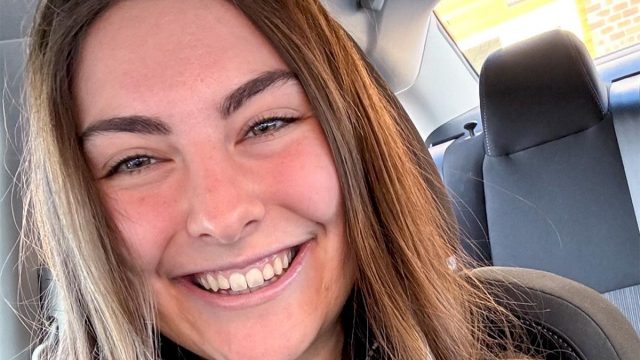6 Daily Habits Thin Women Use to Stay Slim Without Strict Diets

Do you ever wonder how thin women manage to stay slender without extreme dieting or exercise? One expert, who is naturally thin herself, claims to know the secrets. Ashlyn Burnett is a nutrition coach who helps her clients achieve food freedom and "end binge/restrict cycles," she writes in her Instagram profile. In a new social media post she tells-all. "Secret eating habits of naturally thin women," she writes. "These secret habits are game changers."
You Probably Think You Know How Your Thin Friend Is Thin, But You Are Wrong
"You know that one friend who seems to eat whatever she wants and effortlessly maintains a healthy weight? I know what you're thinking," she says. She goes on to reveal the common thoughts, including "She just has a fast metabolism," "She just has good genes," "She's just naturally lean," and "She just got lucky."
Instead, She Has Healthy Food Habits
"But let me tell you a little secret…She likely has some habits with food that you don't have that are allowing her to maintain a healthy weight🤫Here are things naturally lean women don't do," she writes.
Naturally Thin Women Don't Eat When They Aren't Hungry
The first thing they have in common? "They don't eat when they're not hungry just because it 'tastes good," she says. Instead, they " have a deep relationship with hunger and fullness cues."
RELATED: 8 High-Protein Foods with Nearly Zero Calories That Melt Fat
Naturally Thin Women Don't Use Food to Cope With Nerves or Emotions
The second commonality? "They don't use food to cope with nervous system dysregulation," she reveals. Lean women "process their emotions in ways that don't involve food," instead.
Naturally Thin Women Don't Graze on Food All Day Long
The third habit they share is that they "don't graze on food all day long," she says. "They eat big meals when they are hungry and leave space between meals to digest."
Naturally Thin Women Don't Clean Their Plate
Habit four is "They don't clean their plate just because they can," she continues. "They use their body's cues to know how much to eat regardless if there is one or two bites left," she reveals.
Naturally Thin Women Don't Go on Extreme Diets
Number five? "They don't go on extreme diets or follow extreme ways of eating (carnivore, vegan, etc)" she says. Instead, "they eat a wide variety of foods that they enjoy."
RELATED: 12-3-30 Walking Method: 20 Proven Tips to Lose Weight Faster
Naturally Thin Women Don't Obsess Over Food
Finally, they don't think about food 24/7. "They spend mental energy thinking about their life, not food," she explains.
Find the Root Cause of Your Eating by Taking Her Quiz
"And if eating doesn't feel this effortless to you…it's because there is a ROOT CAUSE underneath your relationship with food driving you to use food in a way that soothes your nervous system," she says, revealing that there are 8 of them. Here is the quiz you can take to identify yours. And if you enjoyed this article, take advantage of these 15 Quick Ways to Lose Body Fat Percentage in a Week.




